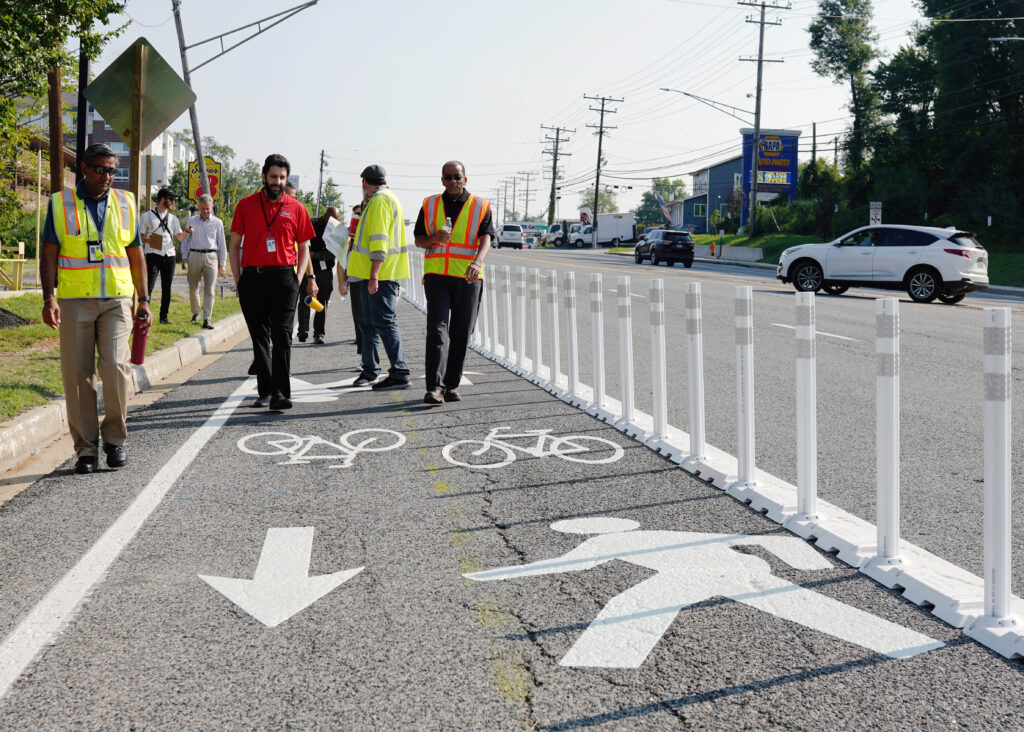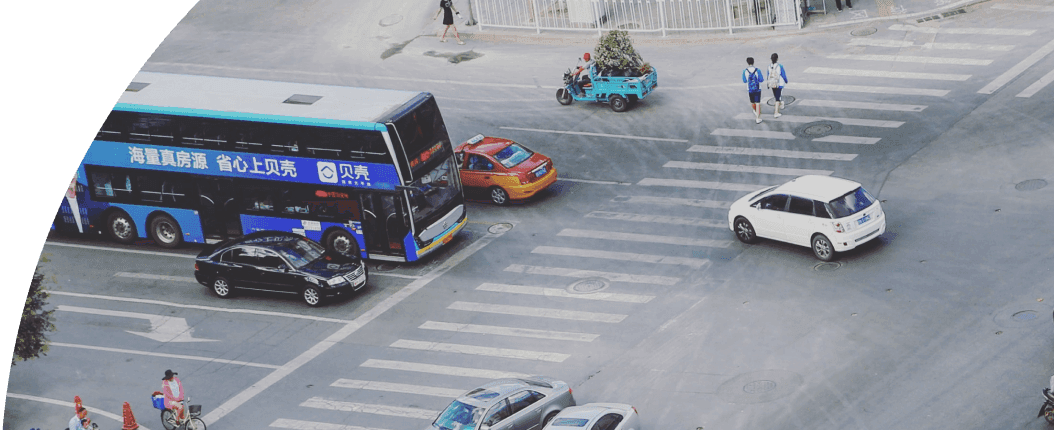
News
By Heidi Simon, July 8, 2025
Over the course of its 25 years, the National Complete Streets Coalition has continued to evolve to meet the needs of the ever-growing movement. This has resulted in new resources, new sectors engaged, new topics tackled, and even changes to our own policy framework in 2018. Through all of it, our commitment to the adoption and implementation of a Complete Streets approach has never wavered. As leaders of the Complete Streets movement, it’s important to be clear about what counts as Complete Streets and what fails to live up to that title.
Smart Growth America’s Best Complete Streets Policies 2025 report celebrates the communities taking bold, thoughtful steps to make streets safer and more welcoming for all users—no matter their age, income, ability, or mode of transportation. This bi-annual report scores newly adopted Complete Streets policies from 2023 and 2024 using the National Complete Streets Coalition’s 100-point framework. In addition to identifying top-scoring policies, the report also lifts up community stories—from large cities to small towns—that demonstrate how strong collaboration, public health priorities, and continual improvement can result in meaningful policy change. Here’s a sneak peek at what we have in the works for the next Best Complete Streets Policies report and how we’re going to be increasingly vocal about what is—and isn’t—Complete Streets.
Scoring Complete Streets policies need to reflect the growth of the Complete Streets movement
When the policy framework was revised in 2018, an increased emphasis was put on implementation, equity, and community engagement. These were areas that the National Complete Streets Coalition recognized as essential to the success of Complete Streets but that were not adequately reflected in the previous framework. As communities continue to face new and persistent challenges in transportation and intersecting issues, strong Complete Streets policies need to meet the moment to provide accountability, implementation, and measurable progress. The National Complete Streets Coalition will shortly kick off a process to critically examine the current framework and identify ways to strengthen its standards even further.
A Complete Streets policy is the first step
Complete Streets is not an individual policy or project, but a change in the approach to transportation. Even the strongest Complete Streets policies won’t achieve their goals if they are not met with the funding, staff, and time to change processes and redesign streets. You don’t get to claim to have a Complete Streets policy if you’re not willing to do the work on Complete Streets. Admittedly, the National Complete Streets Coalition does not have the resources to track every single one of the 1,800 policies in its atlas. The National Complete Streets Coalition will also begin the development of a framework to score Complete Streets implementation so community members and policymakers can do just that.

Not all policies deserve to carry the name of Complete Streets
Over the years, there have been policies that have barely made it on the board in terms of the number of points awarded. This can happen for a variety of reasons, including a lack of knowledge of Complete Streets, failing to find a strong champion, caving to political pressures, or trying to check a box to be eligible for funding or preference. Regardless, our policy scoring framework exists for a reason. Each element is critical to creating a policy that will lead to the changes needed to create communities where everyone can be safe and healthy. Policies that don’t meet the bare minimum of these elements don’t deserve the title “Complete Streets.” Beginning with the next report, Smart Growth America will only list policies that score above 60 points and investigate why state policies—which could potentially have a huge impact on some of our most dangerous roadways—consistently score low.
Twenty-five years ago, we set out to define the meaning of Complete Streets. Over the years, we have seen countless real-world examples of what the Complete Streets approach looks like and what it doesn’t. It’s not watered-down policies that lead to zero change on the ground. It’s not a haphazard selection of projects or projects that tack on biking and walking as an afterthought. It’s not those places that put themselves on the back and consider the work done, as outdated legislation fails ever-changing communities. A true Complete Streets approach means doing the hard work, right now, to adopt new policies, implement new processes, track their progress, and, most importantly, find every opportunity available to change the design of our streets.
As the National Complete Streets Coalition, we are committed to continuing to evolve our standards so Complete Streets policies can meet the needs of American communities based on real-world conditions and issues they are facing. Our goals are more and stronger policies that lead to better outcomes for everyone.
Related News

© 2025 Smart Growth America. All rights reserved
Site By3Lane Marketing










